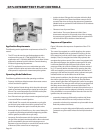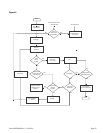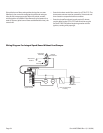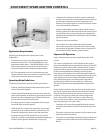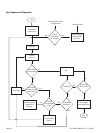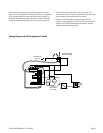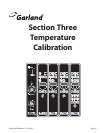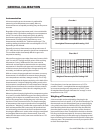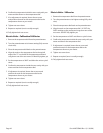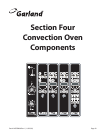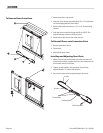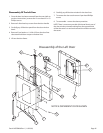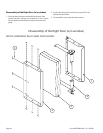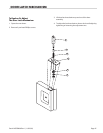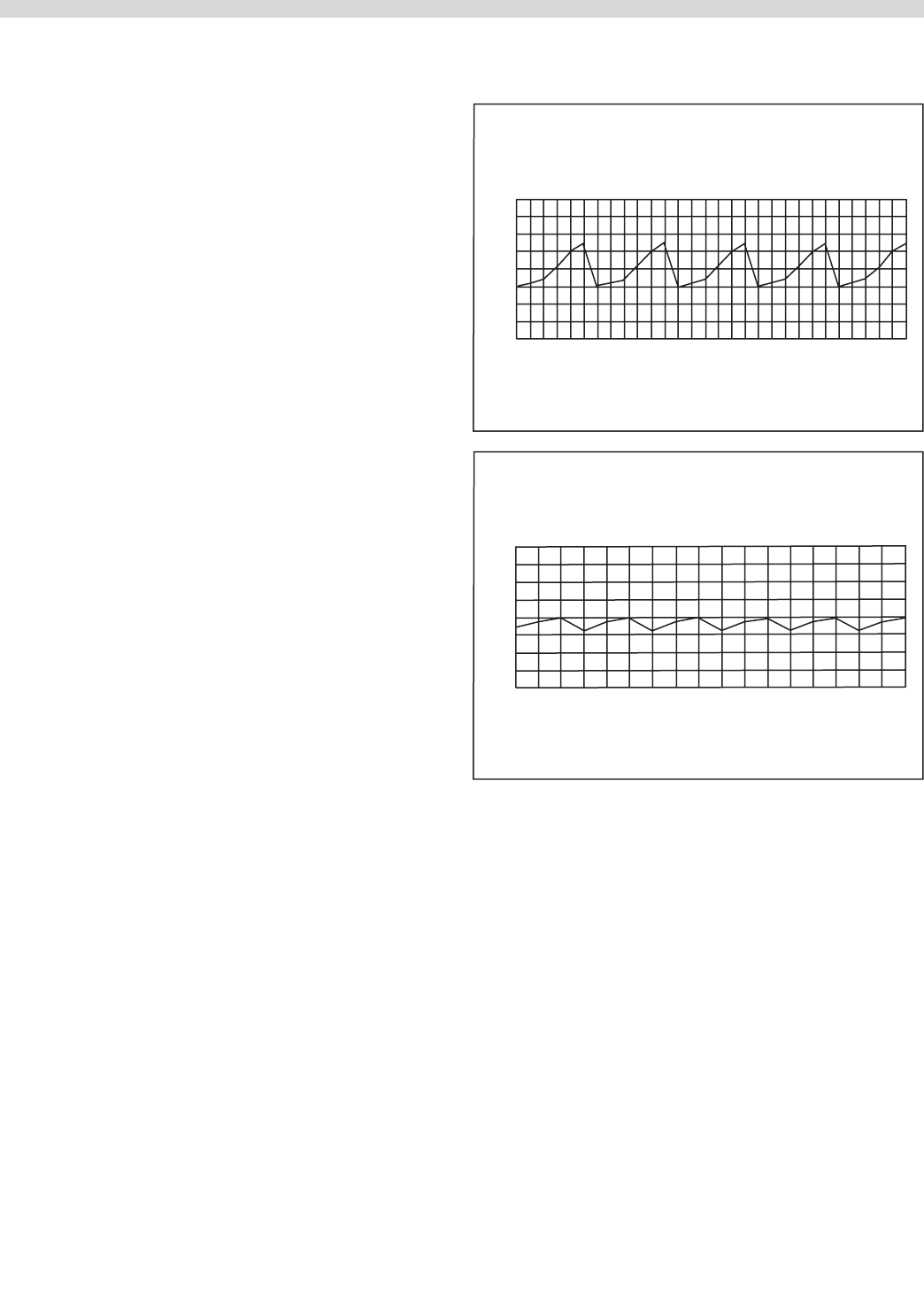
Page 40
Part # MCOSM06 Rev 1 (11/03/08)
GENERAL CALIBRATION
Instrumentation
A thermocouple type test instrument is preferred for
measuring oven temperatures accurately. Mercury
thermometers are acceptable providing they can be proven
accurate.
Regardless of the type instrument used, it is most desirable
to double-check it just before making an oven temperature
check. This can be done simply and quickly by placing
the thermocouple tip (or immersing the entire mercury
thermometer) in boiling water. Note: Mercury oven
thermometers should be the "Total immersion type." The
resulting reading should be within several degrees of 212°F,
depending on the altitude.
Generally, a mercury thermometer can drop and excess of
25° F when the doors are opened to check oven temperature.
This condition makes it extremely dicult to get a true
temperature reading.
Almost all convection ovens today have oven burners which
cycle "on and o" The high and low points of the resulting
temperature "swing" (dierential) in the oven must be
measured- and averaged-to determine the true operating
temperature. A thermocouple type test instrument is best
suited to measure these temperature changes quickly and
accurately, and without opening the oven door.
With an accurate, thermocouple test instrument or mercury
thermometer, it is still dicult to measure these changing
oven temperatures and then, average correctly. This is why
we recommend that the thermocouple tip or the bulb of the
thermometer be "weighed" Weighing (adding mass) to the
test instrument compensates for oven temperature changes
making the test instrument less sensitive to these constant
changes in temperature. Note: How this weighting can be
done is discussed later.
Measuring these changing high and low temperature points
in an oven is possible with either type of test device with out
weighing, but is subject to possible inaccuracies. This is most
true at a low temperature setting because, in this area, the
function of "time" becomes a factor. The simple averaging
of temperatures then may not produce the true operating
temperature. "Weighing" provides the compensation for both
time and temperature that is necessary. We produced test
curved showing actual results in the low temperature area
showing the dierence in results when using an unweighted
and weighted thermocouple or thermometer. Tests were
made with the same control, same oven and dial set at 170°
mark (not moved).
260
240
220
200
180
160
140
120
100
Chart No.1
Unweighted Thermocouple dial setting 170 F
260
240
220
200
180
160
140
120
100
Chart No.2
Weighted Thermocouple Dial Setting 170F
From the above, it can be seen that an error of 15°F is
possible. Chart #1, unweighted thermocouple indicates
an erroneous average oven temperature of 185°F, Chart
#2 weighted thermocouple indicates the "average" or true
temperature to be 170°F.
Weighing of Thermocouple
A thermocouple can be weighted by clamping the tip
between two one inch square 1/16" inch thick aluminum. The
thermocouple can also be weighted (just as successfully) by
using a letter sized sheet of aluminum foil. Fold the foil ve
times doubling the thickness each fold. After the fth fold,
place the thermocouple tip in the center of the aluminum
piece and fold once more. Finally fold in the sides so that the
foil clings to the thermocouple tip. A mercury thermometer
can be weighted in much the same way by wrapping several
layers of aluminum foil around the bulb end thus creating the
necessary mass. This procedure is a must if you open the door
to check the temperature.



